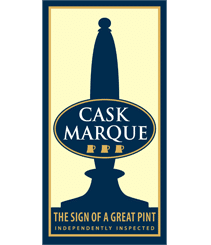In response to the consultation from the Department of Health and Social Care (DHSC), the British Beer and Pub Association (BBPA) has called on the Government to revise how low and non-alcoholic drinks are described. BBPA is also calling for changes to the Advertising Standards Agency rules (ASA) to allow wider promotion of low-strength drinks.
In its response to the DHSC Consultation on Low Alcohol Descriptors, the BBPA has called on DHSC to change the definition of ‘Alcohol Free’ from 0.05% ABV to 0.5% ABV, to bring the UK in line with the rest of Europe, the USA, Australia and New Zealand, which would improve consistency of labelling of such products across the EU, as well as other global markets.
The BBPA has called for ‘low-strength’ alcohol to be defined as between 0.5% ABV and 1.2% ABV. There is clear evidence from the latest Drinkaware research that a significant proportion of consumers seek out lower strength options as a way of moderating their alcohol consumption. A decision by the Australian Government to introduce tax reductions for ‘lighter’ beer of 3.5% ABV or below has led to growth of such beers to occupy 25% of the market. BBPA would like to see a similar ‘lighter’ or mid-strength definition for beers between 1.2% ABV and 3.5% ABV. Consumers are more receptive of beer at this strength and greater consumer acceptance would act as an incentive for significant investment and innovation in the category. A definition at 3.5% ABV would also be consistent with UK Government support for an increase in the current EU excise duty thresholds from 2.8% ABV to 3.5% ABV.
As part of changes to the UK definition for low strength drinks, the BBPA has also called for changes to the ASA’s advertising rules to allow the promotion of low strength beer. The BBPA supports the proposal by DHSC to control the use of low strength descriptors through guidance, rather than in legislation from December 2018. Such guidance requires flexibility and must ensure that labelling terms are positive and are used consistently. The BBPA is aware that DHSC has been considering low alcohol descriptors for some time and as part of its response, the BBPA has emphasised the urgent need for a decision to be made quickly to minimise costs and ensure that businesses have sufficient time to prepare for any changes as a consequence of the review.
BBPA Chief Executive Brigid Simmonds comments: “There is plenty of evidence that moderate drinking brings health benefits, and beer, as a generally low strength form of alcohol, is a great way to enjoy sensible drinking and support your local pub.
“Our proposed changes could further boost the huge amount of investment and innovation in the industry for low and no alcohol beers.”


